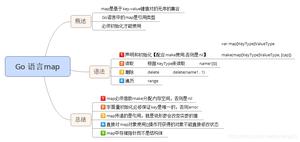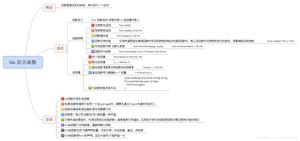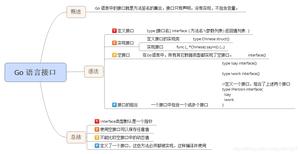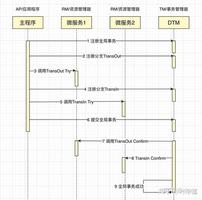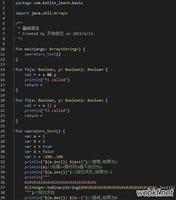python基础之文件操作

文件句柄 = open("文件路径","编码方式","打开方式")
比如:
f = open("D:\常用软件\爵士.txt",encoding="utf-8",mode="r")content = f.read()
print(content)
f.close()
#f是变量,表示文件的句柄。f,f_obj,obj,file_hl,file_hanlder 都可以表示文件的句柄。
#open 它是windows系统的命令
#文件路径:分为绝对路径和相对路径
#编码方式:gbk,utf-8,gb2312....
#打开方式:只读,只写,读写,写读....
#f.read() 通过对文件句柄的操作,来得到你想要的东西
#f.close() 关闭文件句柄,节省内存
备注:打开方式放在最后面时必须为mode="r",否则会报错(SyntaxError:positional argument follows keyword argument),打开方式紧跟文件路径之后时可以省略,为"r"
如果我们没有为open指定编码,那么打开文件的默认编码就是操作系统说了算,操作系统会用自己默认的编码打开文件,在Windows下是gbk,在linux下是utf-8.
绝对路径与相对路径:绝对路径就是最完整的路径,相对路径则是不完整路径,这个相对指的是相对于当前文件夹路径,其实就是你编写的这个py文件所放的文件夹路径,也就是当要打开py文件所处的文件时只要使用相对路径就行了,而要使用其他文件夹则需使用绝对路径。我们常用"/"表示相对路径,"\"表示绝对路径,当路径中遇到\n..或者\t..时系统会误认为是换行符或者tab键,这时使用“\\”或者路径前+r表示转义。
当然我们也可以获得当前文件夹的绝对路径:
import ospath1=os.path.abspath('.') #表示当前所处的文件夹的绝对路径
path2=os.path.abspath('..') #表示当前所处的文件夹上一级文件夹的绝对路径
#
#
# 所以我们常设置一个path1的全局变量来表示当前的绝对路径,再加上相对路径来打开需要打开的文件,
# 这么做是为了在不同的平台上不冲突,因为不同平台在相对路径上的表示上存在区别。
r,w,a三种打开方式打开的文件是文本模式(文字类型的文件),而打开非文本(非文字类型,比如:图片,视频...)只能使用b模式,包括文件的下载和上传。
读"r"有五种模式:
#1.f.read() 全部读出来f = open("练习.py",encoding="utf-8")
content = f.read()
print(content)
f.close()
#2. f.readline() 按行读
f = open("练习.py",encoding="utf-8")
line = f.readline() #括号中什么都不填默认为读第一行 括号里填数字表示读到本行的第几个字符
print(line)
line1 = f.readline() #依次类推
print(line1) #第二行
f.close()
#3. f.readlines() 每一行作为一个元素存在list中
f = open("练习.py",encoding="utf-8")
content = f.readlines()
print(content) #["第一行内容\n","第二行内容\n","第三行内容\n","...\n","..."]
f.close()
#4. 循环读取(逐行读取,可以避免未知大小的文件因为内存过大一次性读取的话导致系统崩掉)
f = open("练习.py",encoding="utf-8")
for i in f:
print(i)
f.close()
#5.f.read(n) n(数字) 表示按照字符读取
f = open("练习.py",encoding="utf-8")
content = f.read(3)
print(content)
f.close()
#1. 打开文件的模式有(默认为文本模式):r ,只读模式【默认模式,文件必须存在,不存在则抛出异常】
w,只写模式【不可读;不存在则创建;存在则清空内容】
a, 只追加写模式【不可读;不存在则创建;存在则只追加内容】
#2. 对于非文本文件,我们只能使用b模式,"b"表示以字节的方式操作(而所有文件也都是以字节的形式存储的,使用这种模式无需考虑文本文件的字符编码、图片文件的jgp格式、视频文件的avi格式)
rb
wb
ab
注:以b方式打开时,读取到的内容是字节类型,写入时也需要提供字节类型,不能指定编码
#3,‘+’模式(就是增加了一个功能)
r+, 读写【可读,可写】
w+,写读【可写,可读】
a+, 写读【可写,可读】
#4,以bytes类型操作的读写,写读,写读模式
r+b, 读写【可读,可写】
w+b,写读【可写,可读】
a+b, 写读【可写,可读】
文件操作方法
1.常用操作方法
read:
1.文件打开方式为文本模式时,代表读取三个字符
2.文件打开方式为b模式时,代表读取三个字节
其余的文件内光标移动都是以字节为单位的如:seek,tell,truncate
注意:
1.seek有三种移动方式0,1,2,其中1和2必须在b模式下进行,但无论哪种模式,都是以bytes为单位移动的。
2.truncate是截断文件,所以文件的打开方式必须可写,但是不能用w或w+等方式打开,因为那样直接清空文件了,所以truncate要在r+或a或a+等模式下测试效果。
2.所有操作方法
class file(object)def close(self): # real signature unknown; restored from __doc__
关闭文件
"""
close() -> None or (perhaps) an integer. Close the file.
Sets data attribute .closed to True. A closed file cannot be used for
further I/O operations. close() may be called more than once without
error. Some kinds of file objects (for example, opened by popen())
may return an exit status upon closing.
"""
def fileno(self): # real signature unknown; restored from __doc__
文件描述符
"""
fileno() -> integer "file descriptor".
This is needed for lower-level file interfaces, such os.read().
"""
return 0
def flush(self): # real signature unknown; restored from __doc__
刷新文件内部缓冲区
""" flush() -> None. Flush the internal I/O buffer. """
pass
def isatty(self): # real signature unknown; restored from __doc__
判断文件是否是同意tty设备
""" isatty() -> true or false. True if the file is connected to a tty device. """
return False
def next(self): # real signature unknown; restored from __doc__
获取下一行数据,不存在,则报错
""" x.next() -> the next value, or raise StopIteration """
pass
def read(self, size=None): # real signature unknown; restored from __doc__
读取指定字节数据
"""
read([size]) -> read at most size bytes, returned as a string.
If the size argument is negative or omitted, read until EOF is reached.
Notice that when in non-blocking mode, less data than what was requested
may be returned, even if no size parameter was given.
"""
pass
def readinto(self): # real signature unknown; restored from __doc__
读取到缓冲区,不要用,将被遗弃
""" readinto() -> Undocumented. Don't use this; it may go away. """
pass
def readline(self, size=None): # real signature unknown; restored from __doc__
仅读取一行数据
"""
readline([size]) -> next line from the file, as a string.
Retain newline. A non-negative size argument limits the maximum
number of bytes to return (an incomplete line may be returned then).
Return an empty string at EOF.
"""
pass
def readlines(self, size=None): # real signature unknown; restored from __doc__
读取所有数据,并根据换行保存值列表
"""
readlines([size]) -> list of strings, each a line from the file.
Call readline() repeatedly and return a list of the lines so read.
The optional size argument, if given, is an approximate bound on the
total number of bytes in the lines returned.
"""
return []
def seek(self, offset, whence=None): # real signature unknown; restored from __doc__
指定文件中指针位置
"""
seek(offset[, whence]) -> None. Move to new file position.
Argument offset is a byte count. Optional argument whence defaults to
(offset from start of file, offset should be >= 0); other values are 1
(move relative to current position, positive or negative), and 2 (move
relative to end of file, usually negative, although many platforms allow
seeking beyond the end of a file). If the file is opened in text mode,
only offsets returned by tell() are legal. Use of other offsets causes
undefined behavior.
Note that not all file objects are seekable.
"""
pass
def tell(self): # real signature unknown; restored from __doc__
获取当前指针位置
""" tell() -> current file position, an integer (may be a long integer). """
pass
def truncate(self, size=None): # real signature unknown; restored from __doc__
截断数据,仅保留指定之前数据
"""
truncate([size]) -> None. Truncate the file to at most size bytes.
Size defaults to the current file position, as returned by tell().
"""
pass
def write(self, p_str): # real signature unknown; restored from __doc__
写内容
"""
write(str) -> None. Write string str to file.
Note that due to buffering, flush() or close() may be needed before
the file on disk reflects the data written.
"""
pass
def writelines(self, sequence_of_strings): # real signature unknown; restored from __doc__
将一个字符串列表写入文件
"""
writelines(sequence_of_strings) -> None. Write the strings to the file.
Note that newlines are not added. The sequence can be any iterable object
producing strings. This is equivalent to calling write() for each string.
"""
pass
def xreadlines(self): # real signature unknown; restored from __doc__
可用于逐行读取文件,非全部
"""
xreadlines() -> returns self.
For backward compatibility. File objects now include the performance
optimizations previously implemented in the xreadlines module.
"""
pass
View Code
class TextIOWrapper(_TextIOBase):"""
Character and line based layer over a BufferedIOBase object, buffer.
encoding gives the name of the encoding that the stream will be
decoded or encoded with. It defaults to locale.getpreferredencoding(False).
errors determines the strictness of encoding and decoding (see
help(codecs.Codec) or the documentation for codecs.register) and
defaults to "strict".
newline controls how line endings are handled. It can be None, '',
'\n', '\r', and '\r\n'. It works as follows:
* On input, if newline is None, universal newlines mode is
enabled. Lines in the input can end in '\n', '\r', or '\r\n', and
these are translated into '\n' before being returned to the
caller. If it is '', universal newline mode is enabled, but line
endings are returned to the caller untranslated. If it has any of
the other legal values, input lines are only terminated by the given
string, and the line ending is returned to the caller untranslated.
* On output, if newline is None, any '\n' characters written are
translated to the system default line separator, os.linesep. If
newline is '' or '\n', no translation takes place. If newline is any
of the other legal values, any '\n' characters written are translated
to the given string.
If line_buffering is True, a call to flush is implied when a call to
write contains a newline character.
"""
def close(self, *args, **kwargs): # real signature unknown
关闭文件
pass
def fileno(self, *args, **kwargs): # real signature unknown
文件描述符
pass
def flush(self, *args, **kwargs): # real signature unknown
刷新文件内部缓冲区
pass
def isatty(self, *args, **kwargs): # real signature unknown
判断文件是否是同意tty设备
pass
def read(self, *args, **kwargs): # real signature unknown
读取指定字节数据
pass
def readable(self, *args, **kwargs): # real signature unknown
是否可读
pass
def readline(self, *args, **kwargs): # real signature unknown
仅读取一行数据
pass
def seek(self, *args, **kwargs): # real signature unknown
指定文件中指针位置
pass
def seekable(self, *args, **kwargs): # real signature unknown
指针是否可操作
pass
def tell(self, *args, **kwargs): # real signature unknown
获取指针位置
pass
def truncate(self, *args, **kwargs): # real signature unknown
截断数据,仅保留指定之前数据
pass
def writable(self, *args, **kwargs): # real signature unknown
是否可写
pass
def write(self, *args, **kwargs): # real signature unknown
写内容
pass
def __getstate__(self, *args, **kwargs): # real signature unknown
pass
def __init__(self, *args, **kwargs): # real signature unknown
pass
@staticmethod # known case of __new__
def __new__(*args, **kwargs): # real signature unknown
""" Create and return a new object. See help(type) for accurate signature. """
pass
def __next__(self, *args, **kwargs): # real signature unknown
""" Implement next(self). """
pass
def __repr__(self, *args, **kwargs): # real signature unknown
""" Return repr(self). """
pass
buffer = property(lambda self: object(), lambda self, v: None, lambda self: None) # default
closed = property(lambda self: object(), lambda self, v: None, lambda self: None) # default
encoding = property(lambda self: object(), lambda self, v: None, lambda self: None) # default
errors = property(lambda self: object(), lambda self, v: None, lambda self: None) # default
line_buffering = property(lambda self: object(), lambda self, v: None, lambda self: None) # default
name = property(lambda self: object(), lambda self, v: None, lambda self: None) # default
newlines = property(lambda self: object(), lambda self, v: None, lambda self: None) # default
_CHUNK_SIZE = property(lambda self: object(), lambda self, v: None, lambda self: None) # default
_finalizing = property(lambda self: object(), lambda self, v: None, lambda self: None) # default
View Code
with关键词
with open(...) as f 可以同时打开多个文件,用","分开
打开一个文件包含两部分资源:操作系统级打开的文件+应用程序的变量。在操作完毕一个文件时,必须把与该文件的这两部分资源一个不落地回收,回收方法为:1、f.close() #回收操作系统级打开的文件
2、del f #回收应用程序级的变量
其中del f一定要发生在f.close()之后,否则就会导致操作系统打开的文件还没有关闭,白白占用资源,
而python自动的垃圾回收机制决定了我们无需考虑del f,这就要求我们,在操作完毕文件后,一定要记住f.close()
我们经常会忘记写f.close(),对于此,可以使用with关键字来帮我们管理上下文
with open('a.txt','w') as f:
pass
with open('a.txt','r') as read_f,open('b.txt','w') as write_f:
data=read_f.read()
write_f.write(data)
文件的修改
文件的数据是存放于硬盘上的,因而只存在覆盖,不存在修改这么一说,我们平时看到的修改文件,都是模拟出来的效果,具体地说有两种实现方式:
方式一:将硬盘存放的该文件的内容全部加载到内存,在内存中是可以修改的,修改完毕后再由内存覆盖的硬盘(word,vim,nodpad++等编辑器)
import os # 调用系统模块with open('a.txt') as read_f,open('.a.txt.swap','w') as write_f:
data=read_f.read() #全部读入内存,如果文件很大,会很卡
data=data.replace('alex','SB') #在内存中完成修改
write_f.write(data) #一次性写入新文件
os.remove('a.txt') #删除原文件
os.rename('.a.txt.swap','a.txt') #将新建的文件重命名为原文件
方式二:将硬盘存放的该文件的内容一行一行的读入内存,修改完毕就写入新文件,最后用新文件覆盖原文件。
import oswith open('a.txt') as read_f,open('.a.txt.swap','w') as write_f:
for line in read_f:
line=line.replace('alex','SB')
write_f.write(line)
os.remove('a.txt')
os.rename('.a.txt.swap','a.txt')
模拟改动文件的步骤:
1.创建一个文件
2.读取原文件
3.将原文件的内容通过你想要的方式进行更改,并写入新文件夹。
4.将原文件删除(remove)
5.将新文件重命名原文件名(rename)
以上是 python基础之文件操作 的全部内容, 来源链接: utcz.com/z/386535.html

